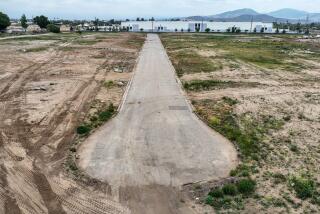Agency Must Address Tollway’s Effects : Persistent Questions Keep the Issue of Highway’s Environmental Impact Alive
- Share via
Recently, an Orange County Superior Court judge criticized the Transportation Corridor Agencies’ governing board for certifying the San Joaquin Hills tollway’s environmental impact report last March, instead of waiting for several important studies on air quality and wetlands to come in. The upshot is that the tollway agency now is scheduled to again review its own environmental impact report in December, but this time to consider more than a half a dozen additional studies detailing the highway’s potential effects on the environment.
Since the agency is in a sense both judge and jury of its own report, the court’s comments are not expected to change things much, although it may have some effect on timetables. But the remarks of Superior Court Judge James P. Gray must add to a general sense that the public has that environmental concerns have been hastily and inadequately addressed along the way.
Indeed, for much of the past couple of years, proponents of the 15-mile highway have been defending their plans against concerns raised by environmentalists who say that not enough has been done to compensate for potential damage to the sensitive landscape of the coastal hills. And during the summer, the staffs of the state Department of Fish and Game and the Coastal Commission joined the chorus.
In written statements at that time, the reviewers said that protective measures to mitigate against damage in a marsh south of the UC Irvine campus that would fill and realign part of Bonita Creek were not enough. Tollway planners replied that the concerns about “massive impacts to coastal resources,” as the staffs described them, were overstated. The tollway agency’s environmental impact manager noted that the route had already been altered. And now the agency asserts that it has addressed those concerns, and a response is under review by appropriate oversight groups.
As for the certification of the report cited by the judge, the tollway agency says that officials went ahead because the road had been studied for a long time, and that there always would be some environmental question or other that could be raised. There is, perhaps, no end to environmental quibbles that somebody or other could raise about such a new road, cutting through some pristine territory. But the persistence of the questions about the environment have kept alive the issue of whether the tollway planners fully considered the crucial work of environmental mitigation.
More to Read
Sign up for Essential California
The most important California stories and recommendations in your inbox every morning.
You may occasionally receive promotional content from the Los Angeles Times.










